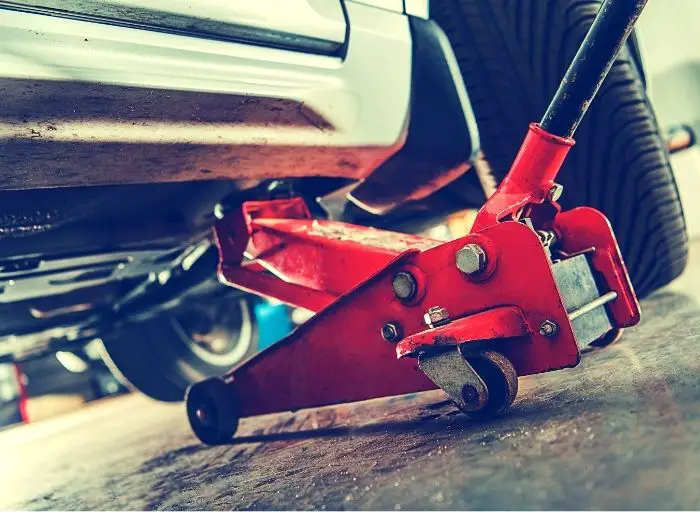
Every time you elevate a vehicle off the ground, you must use safety equipment that is correctly rated for the vehicle’s weight. Because two-post lifts and portable auto lifts aren’t yet available to many mechanics, jack stands are necessary for safe lifting. So, the question is “are jack stands safe?”
Table of Contents
Are Jack Stands Safe?
Yes, if the jack stands are utilized properly and all safety precautions are implemented, they are highly safe.
How to Use Jack Stands Safely
1. Choose a solid surface
Ascertain that the vehicle is on level ground. Pavement, asphalt, or another hard, solid surface should be used.
Always utilize the floor jack and make sure you’re standing on a level surface. When the tires lift off the ground and there is more than a tiny, hardly perceptible slope, one-half of the car may roll or shift out of place. Place the car in park if it has an automatic transmission. Put it in first gear if it’s a manual transmission. Pull the parking brake in both circumstances to ensure that your vehicle remains stationary at all times.
2. Select proper jacking points
Check the vehicle’s owner’s manual for the proper jacking points, and raise only from those points. The floor jack you choose should be suitably rated for the vehicle’s weight, as well as high-quality and from a renowned manufacturer. Covering as much of the jack point’s center as feasible when jacking up the vehicle, but leave adequate area for the jack stand.
3. Put your jack stand in place
Under the lifting point, jack stands must be put directly. At each jack point, there should be ample room for the stand’s grasp. A correctly graded jack stand will withstand the weight of the car when the hydraulic pressure from the floor jack is released as long as the stand is flat. If the jack is slanted or the car weight does not come down level on top of the stand, problems can arise. After checking that the car is firmly placed against the stand, completely lower the hydraulic jack. There should be no jiggling in the stand.
4. Support your car
Jack stands are used to support the vehicle. After Setting the jack stand under the jacking point, you should adjust the height, and then secure it in place with the pin. Use jack stands in pairs to support the entire front or rear of the car, ideally set and locked at the same height. To achieve greater height, avoid using woodblocks since they may slip or splinter; instead, use taller jack supports. Lower the jack gradually until the car’s full weight is supported by the jack stands.
Elevate and support the front of the car first, to the utmost height possible using the jack and jack stands. Then, using the second set of jack stands, lift and support the vehicle’s rear end.
5. Check for stability
To make sure the stands are completely in position, give your automobile a few lights shoves. Make sure the vehicle is balanced and that all of the stands are at the same height. Under typical conditions, the car should be safe to leave on supports forever if everything checks out.
To ensure that the car is secure, gently shake it. Confirm that all jack stands are firmly planted on the ground and do not move when the car is shaken. Because it is not meant to hold a load at an angle, a slanted jack stand may collapse. It is safe to operate on your car once it has passed the shake test.
Conclusion
Are jack stands safe? Of course, they are. However, before working under the car, you must take all necessary precautions.
Hi there! I’m Naomi O’Colman. I’ve got years of experience working at an auto repair shop here in Texas under my belt. On top of that, ever since I was a kid I’ve been passionate about the auto industry. Since I’ve joined the team at automotivegearz.com I’ve been enthusiastically sharing my passion and insights with my readers. I’m dedicated to delivering high quality content and helping you stay up to date with the latest automotive trends and products out there!







